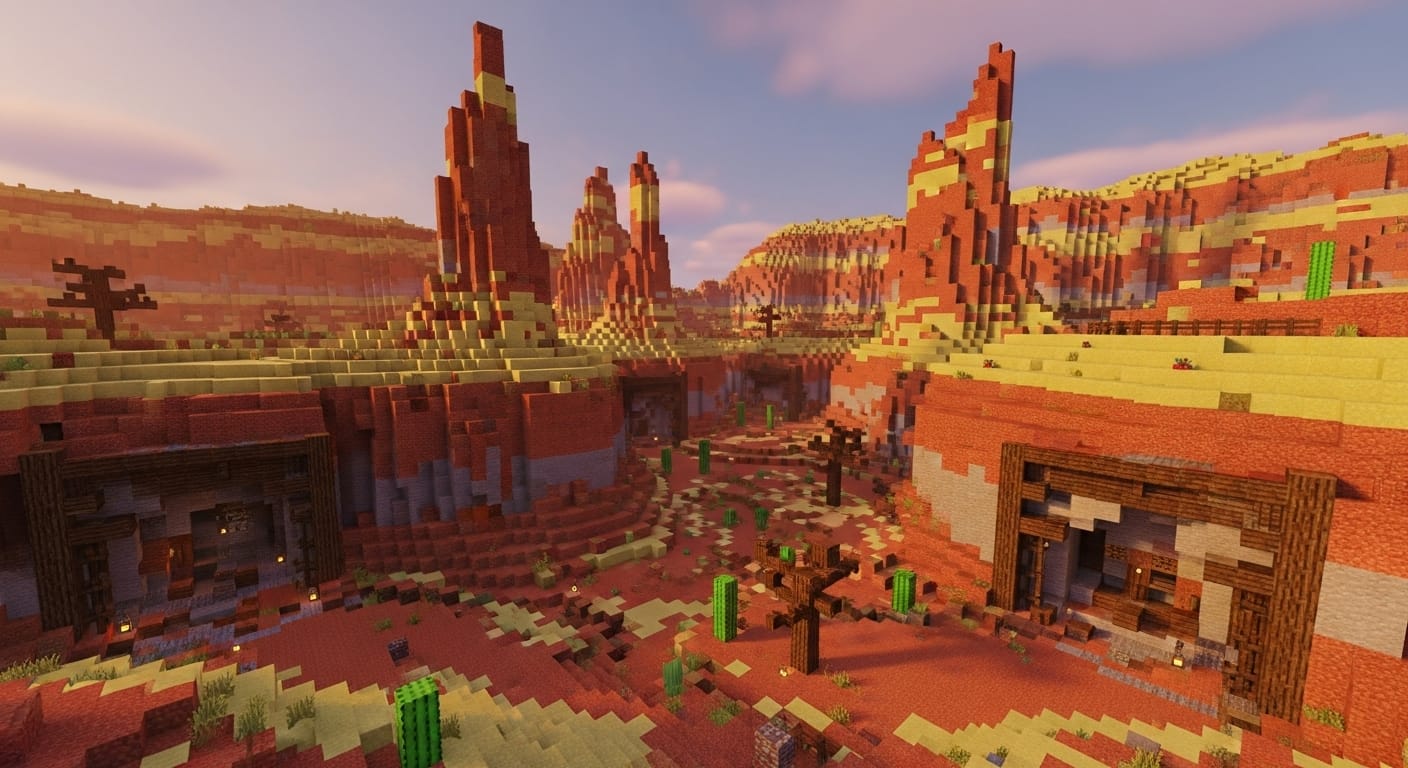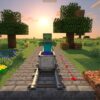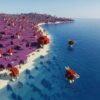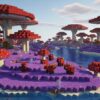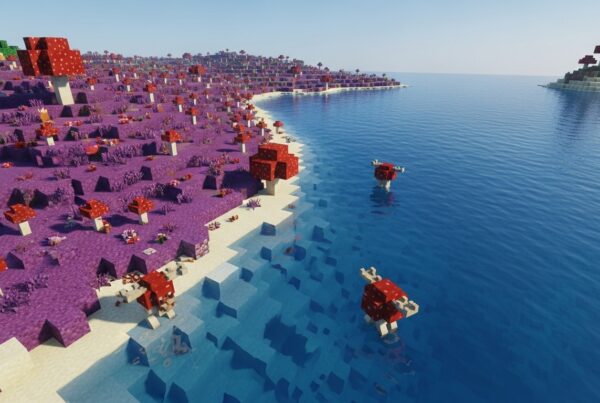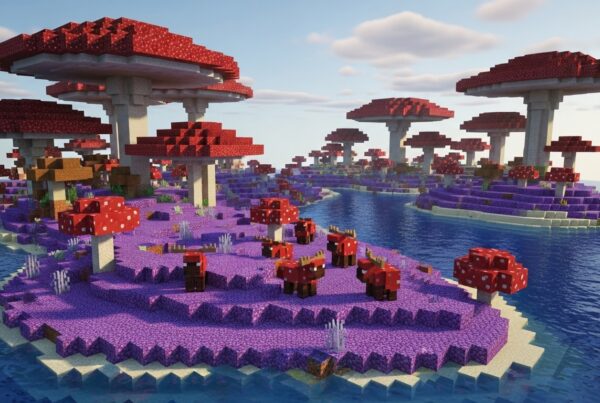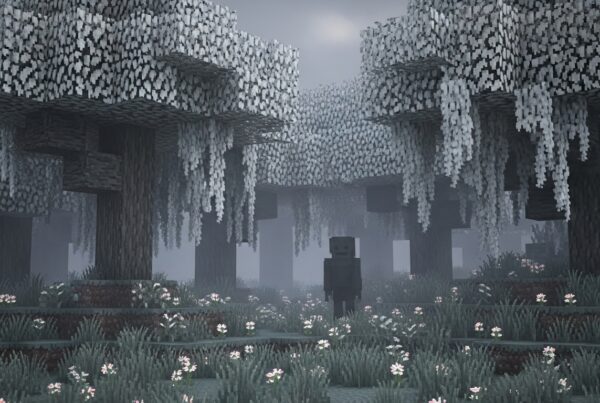The Eroded Badlands biome in Minecraft is one of the most striking and rare landscapes in the Overworld. With its towering terracotta spires, multi-colored cliffs, and deep canyons, it’s a biome that perfectly blends visual beauty with survival challenge. Originally known as Mesa (Bryce), the Eroded Badlands is inspired by Bryce Canyon National Park in Utah, featuring natural “hoodoo” rock formations that make it a favorite among builders and explorers alike.
What Is the Eroded Badlands Biome?
The Eroded Badlands is a warm, dry biome that generates in regions where temperatures are high and rainfall is nonexistent. Unlike other Badlands variants, its terrain is deeply eroded, forming jagged spires and ravines of terracotta, red sand, and sandstone.
Biome Facts:
- Temperature: 2.0 (hot and arid)
- Precipitation: None (downfall = 0.0)
- Elevation: Varies widely due to extreme erosion
- Former Name: Mesa (Bryce) (pre-1.13 Java Edition)
- Inspiration: Bryce Canyon hoodoos
Its dramatic terrain, layered colors, and abundance of mineral veins make it one of Minecraft’s most photogenic and geologically rich environments.
How to Find the Eroded Badlands Biome
Finding this biome can be tricky, as it’s one of the rarest overworld biomes. It typically borders Deserts, Savannas, or regular Badlands biomes.
Tips to Locate:
- Use Commands: /locate biome minecraft:eroded_badlands (Java Edition only).
- Check Warm Regions: Travel near deserts or savannas where climates overlap.
- Look for Terracotta Formations: The biome’s spiked “hoodoos” are visible from afar.
- Seed Databases: Try community seeds such as:
- -9556898 (spawns near an exposed Eroded Badlands canyon)
- 287010690 (large Eroded Badlands bordering Desert and River)
- Bedrock Tip: Exploration-based discovery works best — look for red sand valleys and layered cliffs.
Terrain and Visual Features
The Eroded Badlands features a chaotic and vertical landscape, filled with terracotta spires, sand valleys, and open ravines that expose stone and ore layers. Rivers occasionally cut through the biome, adding rare splashes of green vegetation along their banks.
Common Terrain Traits:
- Tall spiked columns (“hoodoos”) made of terracotta.
- Valleys filled with red sand and dead bushes.
- Ravines and caves that expose ores, especially gold.
- Sparse vegetation — cactus and dead bushes dominate.
Comparison of Badlands Variants
| Biome | Key Feature | Vegetation | Common Blocks |
|---|---|---|---|
| Badlands | Flat mesas and plateaus | Sparse | Terracotta, Red Sand |
| Wooded Badlands | Hills with scattered trees | Moderate | Terracotta, Oak Trees, Grass |
| Eroded Badlands | Spiked, eroded formations | Very Sparse | Terracotta, Red Sandstone, Sandstone |
Resources and Blocks
While the Eroded Badlands is resource-scarce for survival needs, it’s one of the richest biomes for building materials and gold mining.
Common Blocks:
- Terracotta (all colors — red, orange, yellow, white, brown, light gray)
- Red sand and red sandstone
- Stone and sandstone in lower layers
- Cactus and dead bushes (minor vegetation)
Special Resource:
- Gold Ore: Spawns more frequently than in most other biomes, generating between Y=32 and Y=255, even visible on the surface in some areas.
Pro Tip: Bring an iron or diamond pickaxe for gold mining and collect terracotta for decorative projects.
Structures and Mobs
Structures
- Mineshafts: Extremely common — often generate at higher elevations and can appear exposed on the surface.
- Made of dark oak planks and fences, giving them a unique look.
- Rich in loot such as rails, gold ingots, name tags, and enchanted books.
- Other Structures: Villages, temples, and ruined portals rarely appear within the biome itself.
Mobs
- Passive Mobs:
- In Java Edition, passive mobs like cows, pigs, and sheep do not naturally spawn here.
- In Bedrock Edition, some passive mobs may spawn depending on local conditions.
- Hostile Mobs:
- Spawn at night or in dark caves: skeletons, creepers, zombies, spiders, and bats.
- Cave spiders can appear inside mineshafts.
Note: Because of the biome’s rugged terrain, shadows form easily — making mob control and lighting essential.
Survival and Building Tips
Surviving in the Eroded Badlands can be difficult due to limited water, vegetation, and food sources. However, its beauty and resources make it a rewarding challenge.
Survival Tips:
- Bring Essentials: Food, wood, and torches from other biomes.
- Camp Near the Edge: Build a base near a desert or river for easier access to trees and animals.
- Light Up Caves: Prevent mob spawning in the biome’s deep shadows.
- Mine Strategically: Focus on gold and terracotta for valuable resources.
Building Ideas:
- Canyon bases or mesa-top fortresses blending into the terracotta layers.
- Sky bridges connecting spires for dramatic builds.
- Mining outposts themed around old Western gold rushes.
Version History and Trivia
Version Facts:
- Introduced: Minecraft 1.7 (Java Edition) as Mesa (Bryce).
- Renamed: Eroded Badlands in Minecraft 1.13.
- 1.18 Update: Terrain height and terracotta layers increased, creating more dramatic cliffs and color variation.
Trivia:
- Modeled after Bryce Canyon National Park in Utah, known for its “hoodoos.”
- Snow never forms here, even at the highest peaks.
- Often cited as one of the rarest Overworld biomes.
- Mineshafts can intersect the surface, making it one of the best places to explore without digging.
Conclusion
The Eroded Badlands biome is a rare gem in Minecraft, combining stunning natural beauty with a unique set of survival challenges. From its gold-rich mineshafts and colorful terracotta layers to its towering hoodoos, this biome stands apart as both a scenic wonder and a builder’s paradise.
Whether you’re exploring for resources or crafting your next grand build, the Eroded Badlands rewards creativity, preparation, and courage — offering one of the most visually spectacular experiences in the Minecraft world.
